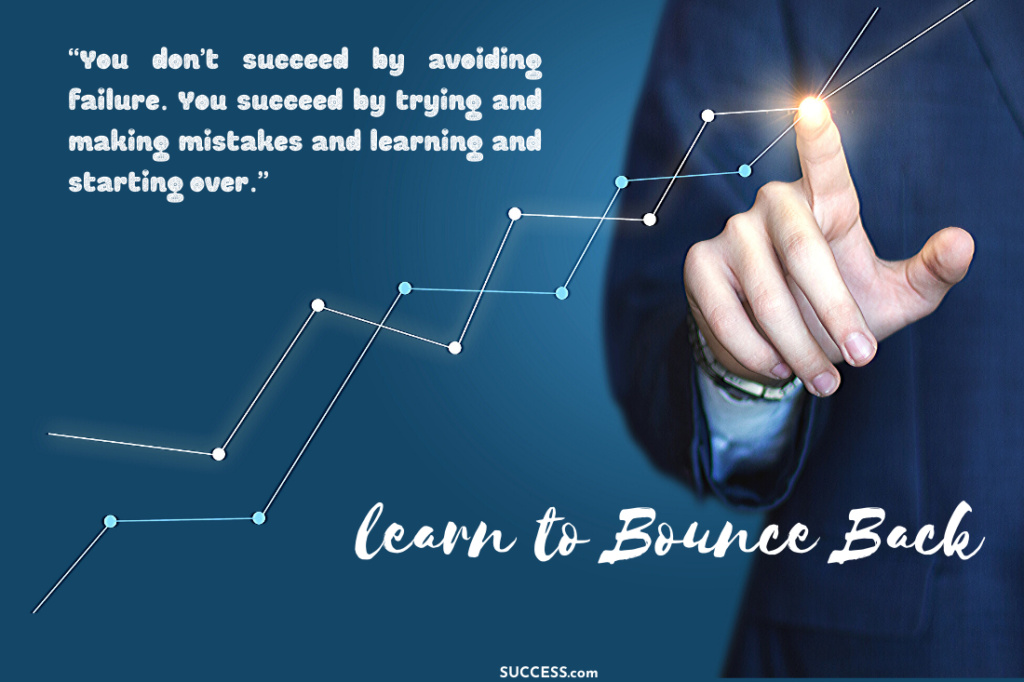Once upon a time, a partially deaf 4-year-old boy arrived home from school with a note from his teacher. It read, “Your son Tommy is too stupid to learn. We cannot have him at our school.” His mother decided she would teach him herself. Young Tommy might have been hard of hearing, but he was a good student and grew up to be Thomas. Thomas Edison. Yes, the man who forever changed how people lived and communicated, and whose childhood bolstered his resilience to press on through the thousands of failures that preceded the success of the electric light bulb. He would later say, “Many of life’s failures are people who gave up too soon.”
Related: 21 Quotes About Failing Fearlessly
Too often though, we overlook the setbacks and only see the end success.
If you study history, you will find that the best success stories have also been stories of pressing on through failure. Too often though, we overlook the setbacks and only see the end success. We think the person got lucky. That they were in the right place at the right time. That they were born with a genius we lack. That they were destined for greatness. But that’s all garbage. Although it might have included a little bit of each, what ultimately led to their success was a refusal to allow setbacks and failures to define them.
Take Walt Disney. As a budding cartoonist, young Walt faced countless rejections from newspaper editors. He “lacked natural talent,” they said. One day a minister from a local church took pity on him and hired him to draw some cartoons in a small rodent-infested shed behind the church. After seeing a mouse, he became inspired to draw it. Mickey Mouse was born.
Even Oprah Winfrey, my very own hero, had her fair share of setbacks, including being fired from one of her first jobs as a television reporter, being told she was “unfit for TV.” Had she let the opinion of others define her or taken her setbacks as a sign she could never break out from her humble beginnings, she would not be one of the most influential women in the world today.
“You don’t succeed by avoiding failure. You succeed by trying and making mistakes and learning and starting over.”
Of course, you might feel like you have little in common with people who’ve risen to the heights of Oprah, Disney or Edison. But that isn’t true. You do. They were not born with some superhuman-like resilience that shielded them from disappointment, self-doubt or misgivings. They each had to wage their own inner battles with fear of failure as they worked hard to overcome the external obstacles that lined their path to success. As Bill Marriott, chairman of Marriott hotels, shared with me in a recent conversation, “You don’t succeed by avoiding failure. You succeed by trying and making mistakes and learning and starting over.”
Related: 7 Ways to Bounce Back After a Mistake
What distinguishes these people is that they did not become a victim to their failures. When their efforts fell short, they pressed on. When they fell down, they got back up. When people told them they didn’t have what it takes, they found new doors to knock on. They each intuitively knew that failure was an event, not a person.
There are things that you and only you can do. Things that will never be done if you do not do them. But any worthwhile accomplishment is going to call on you to trust in yourself more fully, to risk mistakes and reframe your failures as par the course of what it takes you to succeed. Most of all, it will take stepping out of your comfort zone again and again, no matter how loud that little voice of doubt is screaming in your head to play it safe, turn back or give up.
How you choose to interpret your failures will either move you forward in life or hold you back.
How you choose to interpret your failures will either move you forward in life or hold you back. Every failure can be turned into a steppingstone to success. Every mistake is a lesson in what not to do. Every setback is an opportunity to dig deeper into yourself, to access resources you didn’t know you had and to acquire wisdom you could gain no other way. As Richard Branson shared with me during my visit to Necker Island, we mustn’t be embarrassed by our failures. Instead, we need to learn from them and use them to “fail forward” and succeed faster than we would had we risked nothing.
As I wrote in Brave, “The things we want most lie on the other side of what scares us most.” Unless we are willing to risk failure, we will never come to know what we are capable of achieving. It’s why the most successful people risk failure again and again and again but never allow themselves to be defined by it. So if your story of past failures hasn’t been moving you forward, then it’s time you rewrite one that will.
Related: Why Failure Is Good for Success



